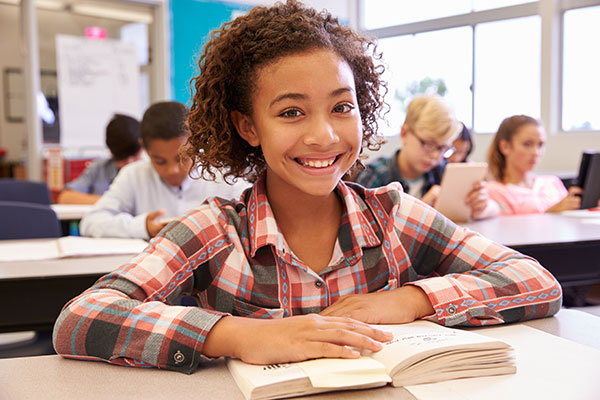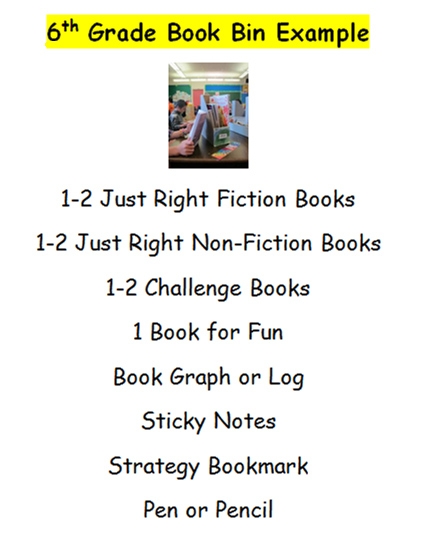A student’s book bin is her toolbox for independent reading and application. The contents of the book bin supports the student’s developing interest and motivation for reading while providing texts to practice the skills and strategies she is learning in class. The contents of a book bin depends on several factors including; a student’s reading range, interest, past reading, and the instruction during that period of time. Students need practice in packing their “toolbox” of texts and resources that provide both enjoyment and resources to connect the ideas learned in class and to practice and demonstrate their learning.

Book Bins
What should students have in their book bins?
It is important to have a classroom discussion several times during a year to create a “book bin protocol” or a list of items that everyone should have in their book bin. At minimum, every book bin needs to have a fiction, narrative nonfiction, and an informational text. Texts should be within the student’s reading range from their independent level up to their challenge level. The number of texts depends on the reading range of each individual. The higher the reading range, the fewer the texts. Preschool and kindergarten readers may have 10-15 texts in their book bin. Primary students may have 8-10 books. Students reading at and above third grade may have 4-5 texts in their book bin. The important thing to remember is that students need enough texts to read and learn for 30 minutes every day for at least a week. Book bins may also contain a book log or graph to keep track of their reading history, a journal for writing in response to reading, sticky notes and other tools for marking important areas of texts, strategy cues and bookmarks.
Book Bins
What should students have in their book bins?
It is important to have a classroom discussion several times during a year to create a “book bin protocol” or a list of items that everyone should have in their book bin. At minimum, every book bin needs to have a fiction, narrative nonfiction, and an informational text. Texts should be within the students reading range from their independent level up to their challenge level. The number of texts depends on the reading range of each individual. The higher the reading range, the fewer the texts. Preschool and kindergarten readers may have 10-15 texts in their book bin. Primary students may have 8-10 books. Students reading at and above third grade may have 4-5 texts in their book bin. The important thing to remember is that students need enough texts to read and learn for 30 minutes every day for at least a week. Book bins may also contain a book log or graph to keep track of their reading history, a journal for writing in response to reading, sticky notes and other tools for marking important areas of texts, strategy cues and bookmarks.
Connections to Learning
How can a book bin support instruction and the demonstration of learning?

Independent reading is a student’s time to practice the skills and strategies explicitly taught and modeled by their teacher in whole group and practiced with their peers during small group sessions. It is important that they teacher models how to think about applying the reading skills and strategies currently being taught and practiced in class while students are reading on their own. For example, if the teacher is focusing on inferring, she will explicitly teach and model how she makes inferences while reading and confirms or revises those inferences while she continues to read a text. While doing this modeling in whole group, she sets the students up to practice this strategy when students are reading and discussing instructional level texts in their small groups. She also models how students can demonstrate their ability to do this when they read text independently. While she models, she will explain that she is showing them what she wants them to do when she confers with them next. Students know that they will need to spend some of their independent reading time practicing what their teacher has been teaching during their 30 minutes of daily independent reading.
RESOURCES
Book Boxes, from Shared to Independent Reading Blog by Keier & Johnson
Rethinking the Book Box by Connell
This article is #7 in the twelve-part series, “Getting My Classroom Ready for Balanced Literacy Instruction: Classroom Culture and Environment.”